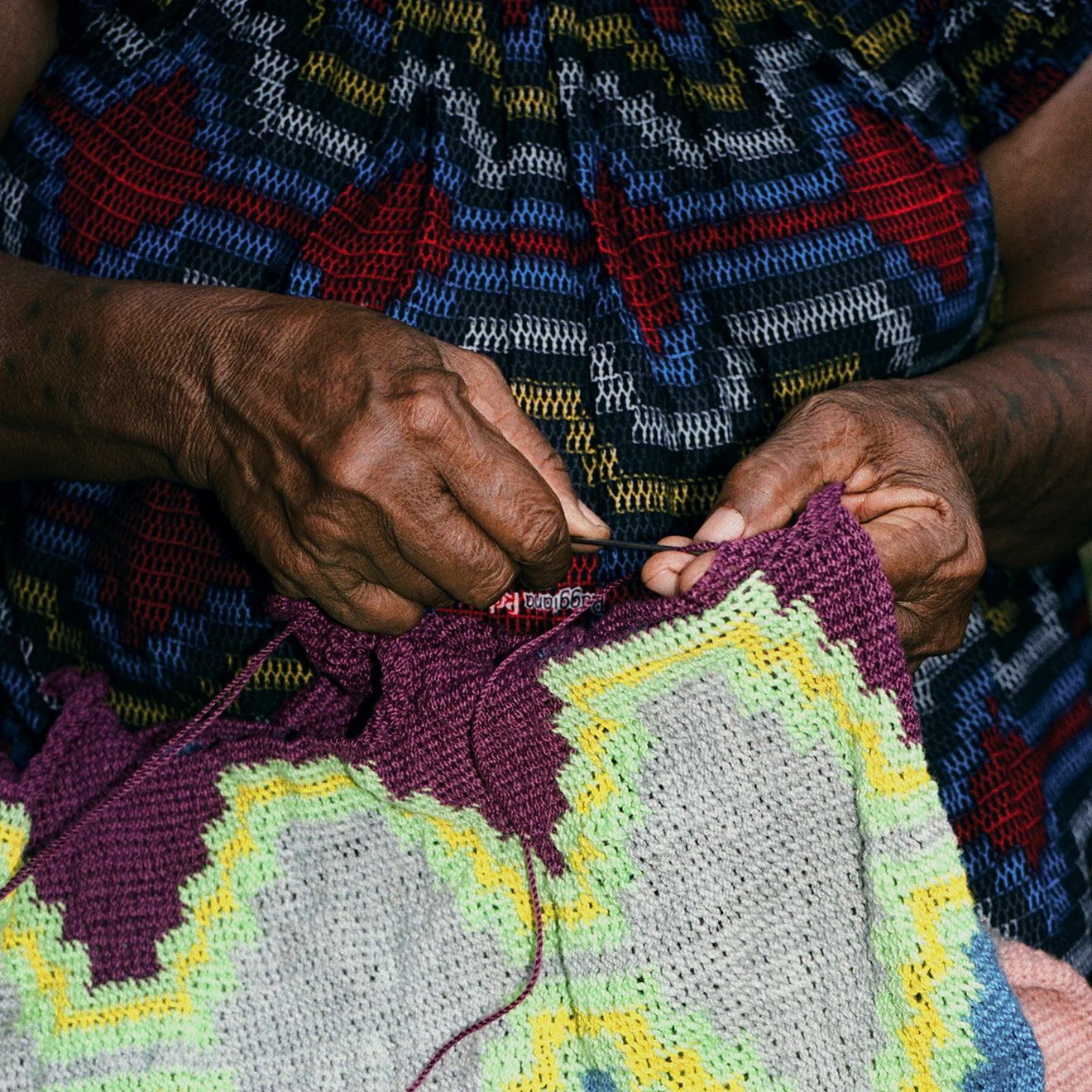Among Equals
Every Bilum tells a story…
Among Equals produce hand crafted Bilum bags that span tradition, art and fashion. By empowering communities of weavers in Papua New Guinea (PNG) to develop new, more diverse applications for their craft, founder Caroline Sherman supports some of the most economically disadvantaged women anywhere in the world.
A visit by Sherman to a small village in Goroka to meet a community of weavers, was the starting point for Among Equals. Ignited by her passion for textiles and craftsmanship, she was so inspired by the weavers she met, that she agreed to fund a community led initiative to empower the artisans to develop the necessary skills to compete in the global marketplace.
Bilum weaving is an ancient time-honoured craft in Papua New Guinea, modernised by the weavers to capture the spirit, art and culture of the region, while communicating cultural identity through its integral link to heritage. It is a powerful symbol of unity, independence, respect and hope. The intricate designs capture the spiritual and cultural heritage of PNG through the use of colour and pattern. These beautiful weavings play a significant role in women’s livelihoods providing a crucial source of income in communities from the highlands to the coast.
“Each bag is the most wonderful work of art, handwoven by an artisan – the design captures her spiritual and cultural heritage, her story and her craft. There is something so magical about their work.” – Caroline Sherman
By paying the weavers a premium for their Bilum, every purchase helps to provide a regular income for the weavers and their families, with profits reinvested into the community. Among Equals mission is to empower more and more Bilum weavers to affect enduring economic and cultural change and amplify the craft by bringing Bilum to a global fashion audience. As a female led brand, they are united in their effort to support marginalised women, by providing artisan weavers with a platform to sell Bilum globally.
The shape and scale of each Bilum is determined solely by the weaver. Each design symbolises an element of the weaver's life, and every bag embodies a story woven right into the fabric: a diamond pattern for example is woven by a mother for her daughter as a wedding gift, and a mountain is symbolic of owning land.
Handcrafted through intricate weaving techniques, the craft of Bilum is passed down from mother to daughter. The word itself translates in Tok Pisin, the official language of PNG, to womb, with the bags traditionally used as cradles for mothers to carry their babies.
“First and foremost, I want to support the retention of traditional designs, stories and knowledge, it is crucial that we honour this traditional craft and the weavers’ work, we also want to ensure that Bilum is a viable business for the next generation of weavers. I am so excited by the industry’s potential.” - Caroline Sherman.
The process although called weaving isn’t made on a loom and doesn’t incorporate interwoven warp and weft threads. In reality it falls somewhere between needle lace and crochet with the women performing dexterous and rhythmic twisting and looping techniques to produce unique three-dimensional structures and one of a kind art. The bags themselves vary incredibly in terms of pattern, colour, scale, fibre and application of the technique.
Bilum refers to the bag itself, but the craft of Bilum continues to evolve, with new applications expanding to include an incredibly diverse range of totes, pouches, purses, and even dresses, some adorned with colourful tassels and pompoms, others with contrasting leather straps, with the weaver’s creative innovation propelling its use forward through a combination of tradition, modernity and creativity.
“Our mission is to support (the weavers) creative practice as it evolves. We are guided by our weavers, continually inspired by their dynamism and innovation” – Caroline Sherman
Each handwoven Bilum takes about eight weeks to produce. The weavers’ use locally sourced natural fibres from the Pandanus plant and the Tulip tree, with the fibres beaten, rolled on the knee and twisted into yarn. The women also work with upcycled yarns by unravelling sweaters and re-spinning the yarn on a drop spindle, a laborious process that adds significantly to the production timeline.
Make it stand out
Natural dyes come from plants, with ochres and berries used extensively in the weaver’s colour palette. This considered approach is a testament to the skills of the women as well as to their philosophical approach to a holistic process using natural and recycled materials.

































